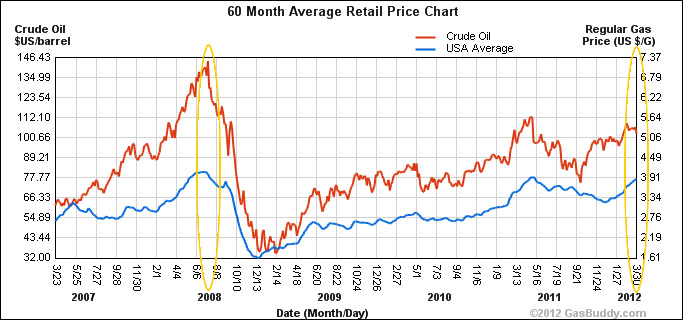Now that drivers are getting sticker shock at the pump and being told there is nothing that can be done about it, they might start appreciating what we in general aviation have known about for awhile…fuel costs can make or break you.
Right now 100 LL (Low Lead) at Rochester, New York (KROC) is selling for $7.07 a gallon. This price is $3.00 more per gallon than regular unleaded gas. Now if you take $7.07 a gallon and multiply it by 53 gallons to fill up a Cessna 172S, your fuel cost comes out to $374.71 to top off the tank. If you get a fuel burn of 10 gallons an hour you are burning $70.70 worth of fuel every hour you fly, not including the cost of insurance, fees, and maintenance.
As a recreational pilot (like many) who make a modest income (like most pilots & non-pilots) I realize that I won’t get any sympathy from the general non-flying population. However, when planes don’t fly they don’t get serviced (mechanics lose jobs), they don’t get fueled (tax revenue is reduced significantly), facilities fall into disrepair (costs increase) and your local airport starts looking a like an old Wild West ghost town.
Recreational pilots have their financial limits too. Yes believe it or not we do not have bottomless wallets where we can just dig deeper to pay more…and more…and more. Already industry leaders in aircraft manufacturing are re-evaluating the American market and are ready to leap to China (with a Chinese partner) and build aircraft over there. Hawker-Beechcraft is rumored to be close to filing for bankruptcy. The American market is soft and since corporations need to go where the money is (to stay in business), you can expect more Americans…perhaps even you…to lose their highly skilled job.
Now it doesn’t take a rocket scientist…sorry…we are losing them too…to sit up and take notice to what I call “trickle up economics”. This is where you and I STOP consuming products or services due to costs causing what’s known as a recession, or a snowballing recession. As we stop becoming consumers, the industries above us who benefit from our consumption hold back, layoff, re-structure, go bankrupt or go into survival mode and run into the arms of a foreign partner (to their own peril) to stay in existence. This creates a cycle that generates a recession or depression.
Can it get worse?
If you haven’t noticed, the cost of a gallon of regular unleaded is $4.00 a gallon in many places, even though the price of a barrel of oil is $105. It’s interesting because just a few years ago oil at $146 a barrel was creating $4.20 a gallon gas. Given this historical information, as shown in the graph below, it would appear that not only can things get worse than they already are…they can get far worse. Is this part of a bigger plan?
Washington politics are now forcing a cut off of oil supplies from Iran to other countries, creating highly competitive conditions for the remaining supplies of oil. Higher demand on low supply causes prices to increase…the snowball is getting bigger. Higher prices will most likely create a double dip recession. Another recession could be just enough to cripple General Aviation permanently, and if you are expecting a government bailout for Hawker-Beechcraft, my advice is to not hold your breath. Why? Simple…it’s because nobody is paying attention to the frog (General Aviation) in the slowly boiling water and they don’t care.
The question is this…when will common sense finally kick in? The common sense I am talking about is this…when will we stop killing our own economy with the policies we keep putting into place? Our turn-around time is finite. Old pilots and planes do die, so what do we have to do to fill the gap? What’s the plan? How can we bring in more student pilots when we are hit with wave after wave of poor decision making and higher costs?
“The production of too many useful things results in too many useless people.”
– Karl Marx
Policies matter…utopian engineering takes no prisoners. Does the making of fewer useful things result in too many useful people? Not in America! We are already making fewer useful things and higher unemployment…and the exporting of our manufacturing base has been the result.
Here is an important video about economics that even a child can understand. What the video fails to show are the government policies, taxation methods, and low cost global competition that impact businesses and undermine this traditional business model. How well we can adapt to the new business model remains to be seen. Building fewer useful things seems to be creating fewer useful people who can in turn afford the few useful things that we do make, resulting in more useless people.
[youtube=http://www.youtube.com/watch?v=2auI6Uz3D8I&feature=player_embedded]



3 Responses
Hello! But what’s your idea here? There should be aircraft with better fuel efficient engines? Or the oil price should somehow be lower? For the long term, there are very interesting research going on with electric airplanes. There was a twin electrical airplane which flown successfully in Italy recently, and the cost to completely recharge the batteries is really tiny compared to oil prices for an equivalent flight…
Here are a few ideas:
By switching to the use of unleaded fuel instead of using 100 LL, you would save $159 in fuel cost per fill up. That’s not bad! Having less lead in the air is a win-win.
By using computerized mixture leaning you could probably save 2 to 3 gallons per hour of fuel. Why does manual mixture controlling still exist in this high tech age? Some people lean on there own, but it can probably be done better by technology.
By designing and using more fuel efficient engines.
I am sure there are other ideas like you have mentioned, which is great and should continue. My concern has to do with govenment policies, of which there are plenty, that complicate the matter instead of working with industries to reach goals.
Here is something you can checkout: http://en.wikipedia.org/wiki/Rotax_912